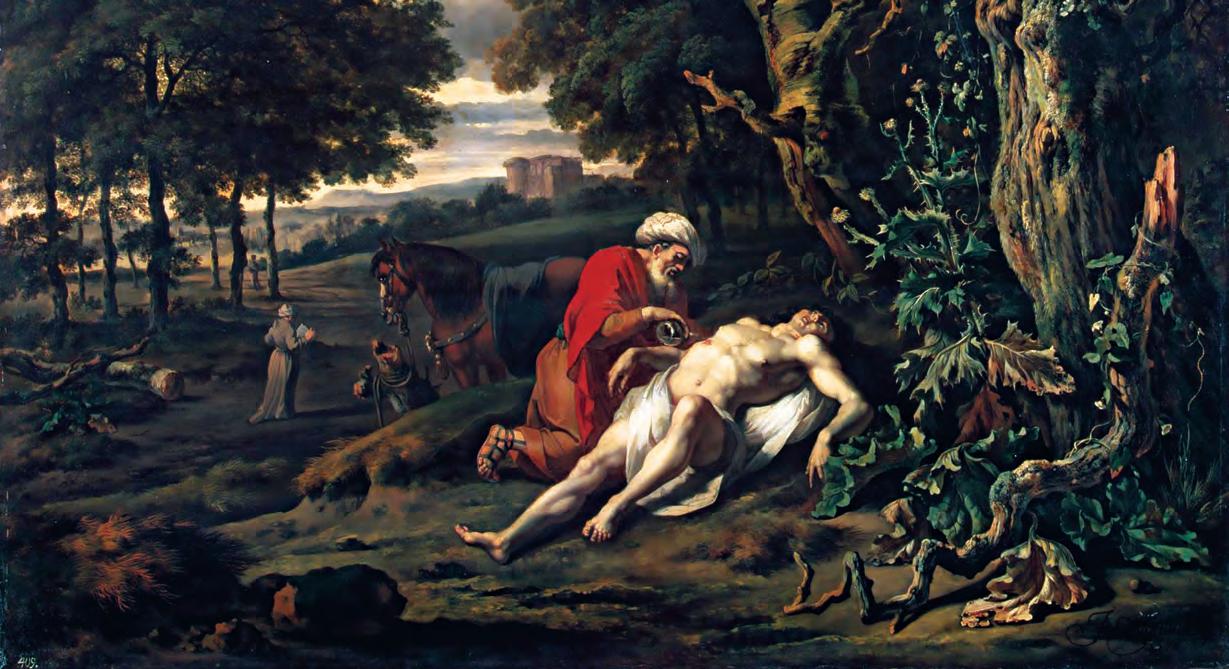
3 minute read
The Jericho road
Part 4: Walk on by
Lieut-Colonel Gilbert Ellis continues a six-part reflection on the parable of the good Samaritan
SO far in this series we have looked at the cities of Jerusalem and Jericho, the road that ran between them and the robbers who attacked the lone traveller on that road. We come now to the point where other characters enter the story.
First to come along was the priest. He reviewed the scene, then passed by on the other side.
It has been claimed that the priest did not stop because he was on his way up to the Temple, and if the robbed and beaten man was dead, and he as a priest came into contact with him, then he would be defiled and unable to officiate. However, this approach to the story is a view that is not supported in the parable. It says: ‘A priest happened to be going down the same road’ (v31). Not only was he on the same road as the victim, it also seems he was travelling in the same direction: not up to Jerusalem but down to the cursed city of Jericho.
Remember, this journey down to Jericho is symbolic of humankind’s fall from grace, of descending from the high, lifted up Jerusalem, where God is glorified, to the depths of the cursed, destruction-bound city of Jericho.
The priest represented the Mosaic tradition of the Old Testament, and the reason he did not stop to aid the stricken traveller is because he couldn’t help him. The writer to the Hebrews proclaimed: ‘Day after day every priest stands and performs his religious duties; again and again he offers the same sacrifices, which can never take away sins’ (10:11).
The sacrifices and ceremonies of the Old Testament were only an illustration, a shadow and precursor of the reality that was to come, which was to be fulfilled in Jesus Christ. For travellers on the road to destruction, wounded and in need of spiritual rescue, the Old Testament sacrifices are of no help. ‘Salvation is found in no one else, for there is no other name under Heaven given to mankind by which we must be saved’ (Acts 4:12).
The next traveller to come across the stricken man was a Levite.
To understand his significance we need to consider the history of the Levites, which goes back to Levi, the third son of Leah and Jacob (see Genesis 29:31–34). As the family grew into a nation, Levi became the patriarch of the tribe bearing his name, the Levites.
Levi’s grandson, Amram, married Jochebed, and she bore him three children. Their first child was a daughter they named Miriam, then followed two sons, Aaron and Moses. Out of the nation of Israel, God chose the tribe of Levi to serve him, and the sons of Aaron, the great-grandson of Levi, to be the priests. Thus all priests were Levites, but not every Levite was a priest.
When the Israelites arrived in the Promised Land, the country was divided among the tribes, but the Levites were not given a distinct territory. They were dispersed among the other tribes and later served at the Temple. They cleaned the Temple, manned its gates, slaughtered some of the sacrificial animals and performed music during worship.
The Levite in the parable represented those whose lives were wholly dedicated to the practical upkeep of the Temple and its services. He was a man who knew all about Temple life and the ritual concerning sacrifices.
The Levite was totally concerned with the practicalities of religious life, but his experience was insufficient to help the person who was spiritually struck down. He could help people observe the legal and spiritual requirements of the Law, which could possibly help prevent someone from falling. For the person who had already fallen, however, he could do nothing.
The priest and the Levite passed by on the other side of the Jericho road, representing those who may be willing to help fallen humanity but cannot achieve its salvation because they do not possess the power to do so.
LIEUT-COLONEL ELLIS LIVES IN RETIREMENT IN NORWAY
*Next week Part 5: Taking the initiative










